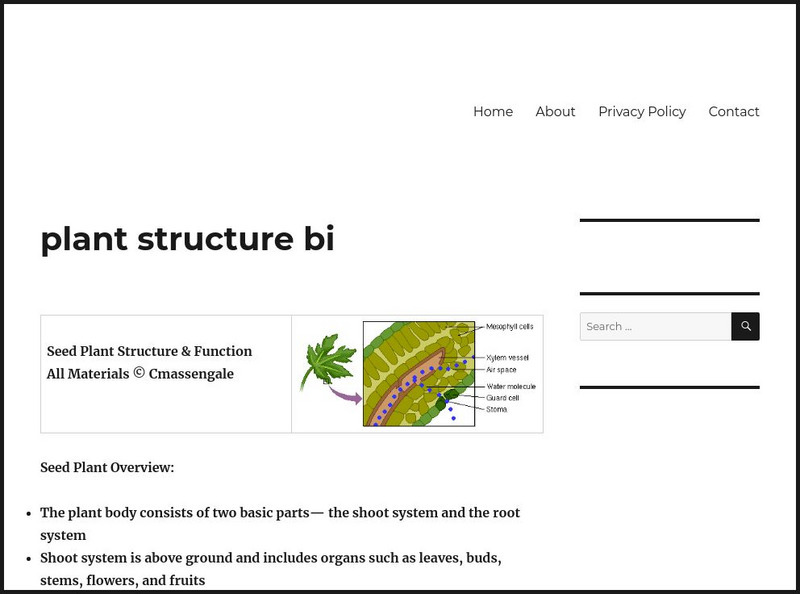Hi, what do you want to do?
Curated OER
Which Way to Roots Grow?
Second graders explore roots and how they grow. They observe as seeds planted in various directions grow and record their observations. Students discuss the direction in which the roots are growing.
Curated OER
Biodiversity
In this biodiversity worksheet, students sort and classify animals by their observable features using a dichotomous key. Students then respond to questions about complete and incomplete metamorphosis.
HotChalk
Hot Chalk: Lesson Plans Page: Probing Into Plant Parts
In this lesson plan students will obtain a better understanding of a plant's needs, and how the various parts of the organism help it to meet its needs. Students will understand how some plants are alike and different.
Other
Stuttgard High School: Plant Structure & Function
Site features high school-level comprehensive info on the structure and function of seed plants organized into shoot and root systems. While presented with lots of detail, clear illustrations and animations help make sense of the parts...
Other
Biology: Evolution of Sexual Reproduction
This paper, the work of a Ph.D. researcher, presents an interesting discussion of the reasons that assexual reproduction is not used by most organisms. Toward the end is a specific discussion of reproduction in plants. Advantages and...
University of California
Ucla: General Botany: Types of Roots
Roots are the principal water-absorbing organs of a plant. Learn about this part of vascular plants and variations in the types of roots.
Canadian Wildlife Federation
Hinterland Who's Who: Invasive Alien Species in Canada
Did you know that invasive alien species can be found in nearly all parts of Canada? Learn about these invasive species and how they infiltrated Canada's ecosystems. Investigate the problems these invasive species are causing, as well as...
Discovery Education
Discovery Education: Plants
The Discovery Channel provides numerous lesson plans dealing with plants. Content is organized by grade level, but all lesson plans include suggestions for adaptations for older or younger audiences.
Estrella Mountain Community College
Online Biology Book: Plants and Their Structure
A college-level, online textbook explains plant structure at length using full-color illustrations and labeled diagrams.
Soft Schools
Soft Schools: Flower Anatomy
Identify the major parts of a flower. Select each part name and drop in the boxes next to the full-color diagram.
PBS
Nh Pbs: Nature Works: Ecosystems
How would you define an ecosystem? Check out this educational resource to learn more about the living and nonliving parts of different ecosystems.
Alabama Learning Exchange
Alex: 'Nuts' About Peanuts!! (Writing)
This lesson will be implemented as part of a unit about plants. The students will describe the characteristics of a peanut and peanut butter (using their five senses) and record their observations/descriptions on a graphic organizer....















